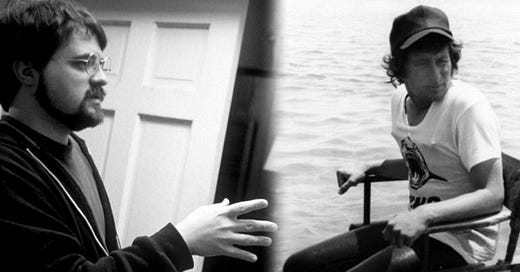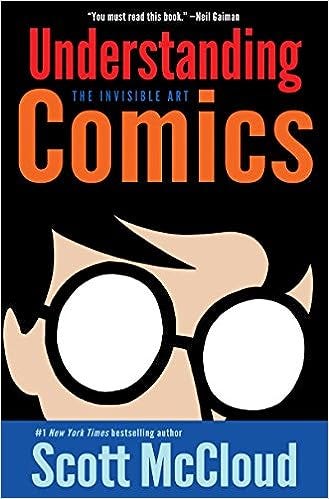Exposition can be tricky, especially for new writers. Unfortunately, in an effort to stamp out clumsy dialogue with the pithy and memorable phrase, "show, don't tell, " we've inadvertently cut off whole creative avenues for writers and directors. In particular, the telling of stories without showing them.
Rear Window really is my favorite Hitchcock movie, but I don't think its opening scene should be used as the epitome of "show, don't tell" for students. In this video, I contrast Spielberg's Jaws with Kevin Smith's Chasing Amy to illustrate why. Along the way, we'll see examples from Kurosawa, Kubrick, and Aronofsky, and three different Morgan Freeman movies.
As always, the list of films and shows used in this video is at the bottom of this article. Because studios don’t understand Fair Use.1 this video isn’t monetized yet. I’ll soon be opening this Substack up to paid subscribers, but in the meanwhile, a Super Thanks on YouTube would be appreciated!
Who Told Me First
The inspiration for this video essay was David Bordwell’s classic article, “Tell, Don’t Show.” Bordwell uses Persona, Exodus, and Psycho for his examples. Those first two were a little esoteric to center my argument on, and I didn’t find the psychiatrist scene to be particularly engaging for my purposes.
Besides, Spielberg and Smith basically doing the same scene helps illustrate the point more clearly than isolated examples could.
Way back in 2006, Matt Zoller Seitz wrote a passionate attack on the idea of Show, Don’t Tell, while defending the value of voice-over narration.
I have been planning on making this video for a while now. I cited Bordwell’s article on my other Substack,
, way back in January—Hitch Himself
Hitchcock/Truffaut is one of the few books I picked up in film school that I liked enough to actually keep. The two great filmmakers discuss every single Hitchcock movie, from his silents (including the magnificent The Lodger, which Hitch considers to be his first “true” film) to the 70s (including what we might call the last “true” Hitchcock, Frenzy).
Many of the interviews, including the one I clipped for my video, are on YouTube.
Interestingly, someone made a documentary about the book itself, interviewing filmmakers about the ways the book influenced them—from the movie brats, like Martin Scorsese and Peter Bogdanovich, to modern directors like Wes Anderson and David Fincher. It’s not great; it’s mostly just praise for the book, which you might as well read yourself.
Comical Understanding
Another book I read in college, but not one that was assigned to me, was Understanding Comics. It’s an ambitious book, tracing the history of comics from paleolithic art to modern superheroes.
Much of what McCloud discusses applies to other visual/narrative arts, including and especially movies. I highly recommend it, if only for it’s explanation of word-image combinations and the interaction of time and narrative.
Rashomon side-by-side
While pulling clips, I stumbled across this interesting video from a channel called Style is Substance, which shows the differing stories told in Rashomon all at once—
Commentaries
Notoriously, Seven went through many, many drafts. On the DVD commentary track,2 Fincher explains that the studio had accidentally sent him the first draft of the script. It was more or less the ending that we got (and I discussed in my video essay).
However, the studio had required writer Andrew Kevin Walker change the ending, so that Mills (Brad Pitt) would rescue Tracy (Gwyneth Paltrow) before John Doe (Kevin Spacey) could kill her, just in the nick of time. After realizing their mistake, they sent Fincher this new draft, which he hated.
Luckily, he got on the phone with Brad Pitt, who loved the original ending. Pitt’s star power is what saved the movie and led to the classic that it is today.
I likewise listened to the Chasing Amy DVD commentary with some regularity as a film student. Fincher is a formalist, while Kevin Smith seems much more relaxed. Thus, his style seemed more accessible me, as a 19 year old with no money or connections. Naturally, that’s how I knew exactly where to find the commentary I extracted for this video essay.
Filmography
YouTube gave me copyright notices on Se7en and Unforgiven.
Which I listened to so much, I actually wore out the DVD!
The clip I pulled is from the extended cut, which doesn’t seem to be available.





